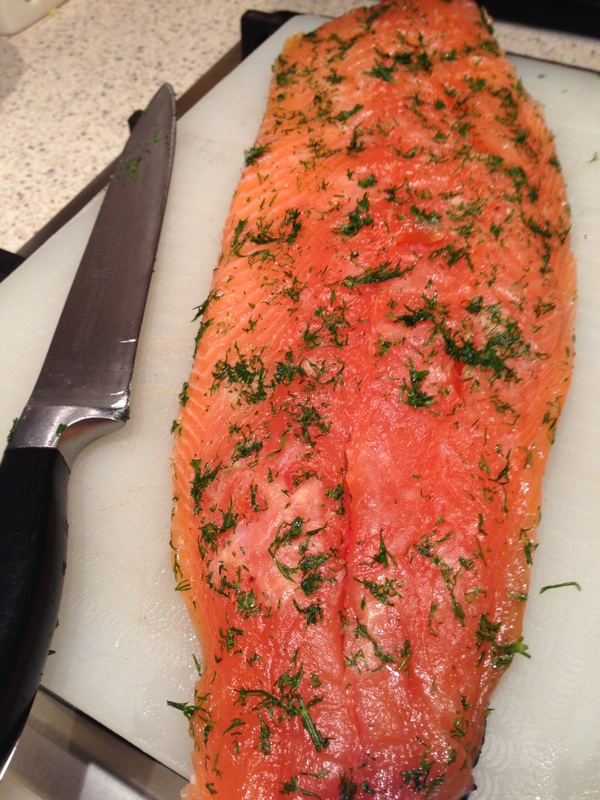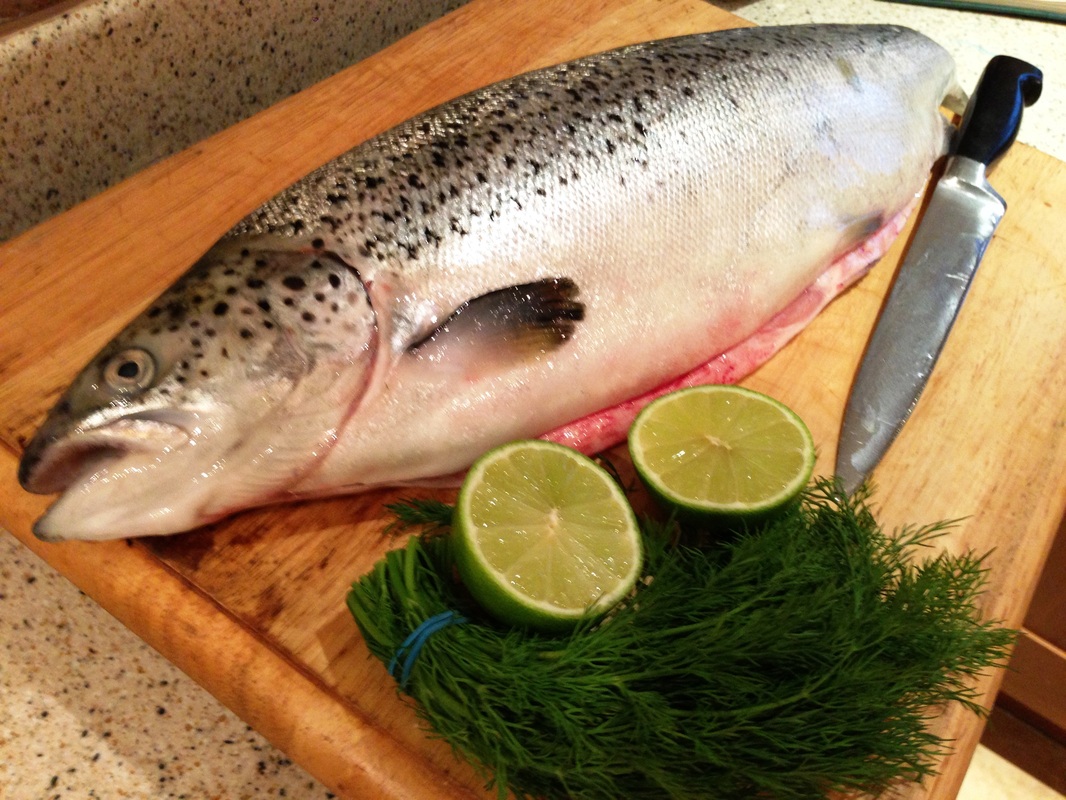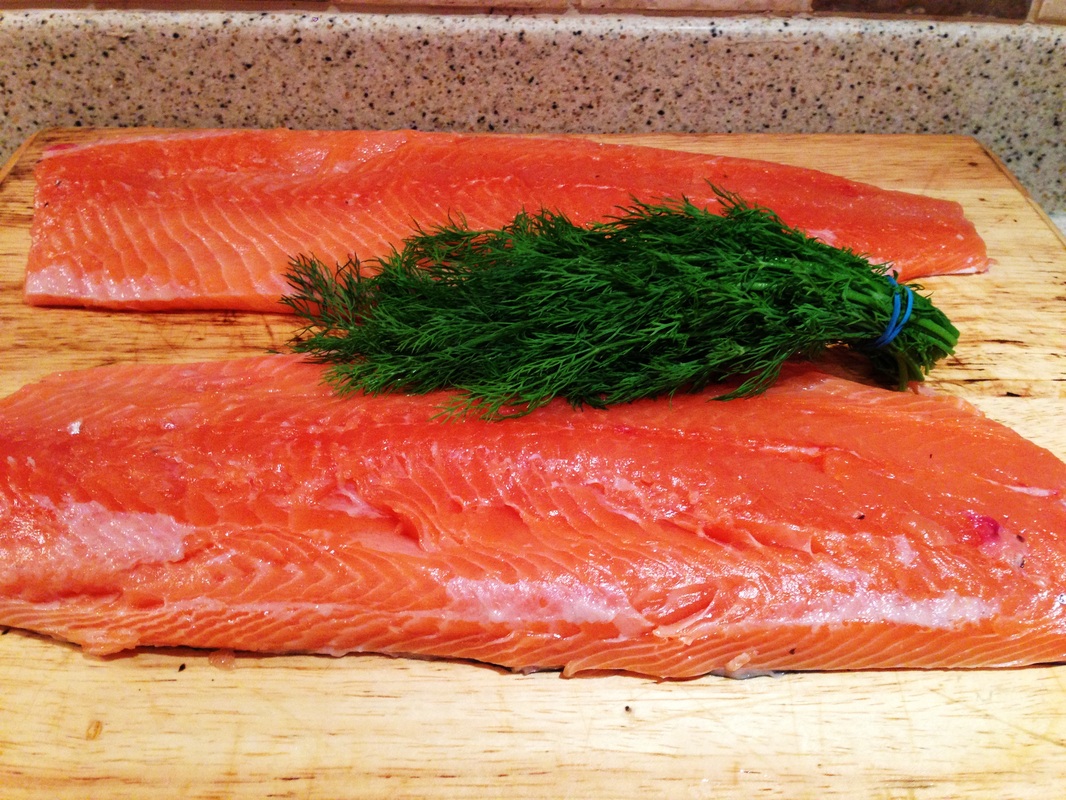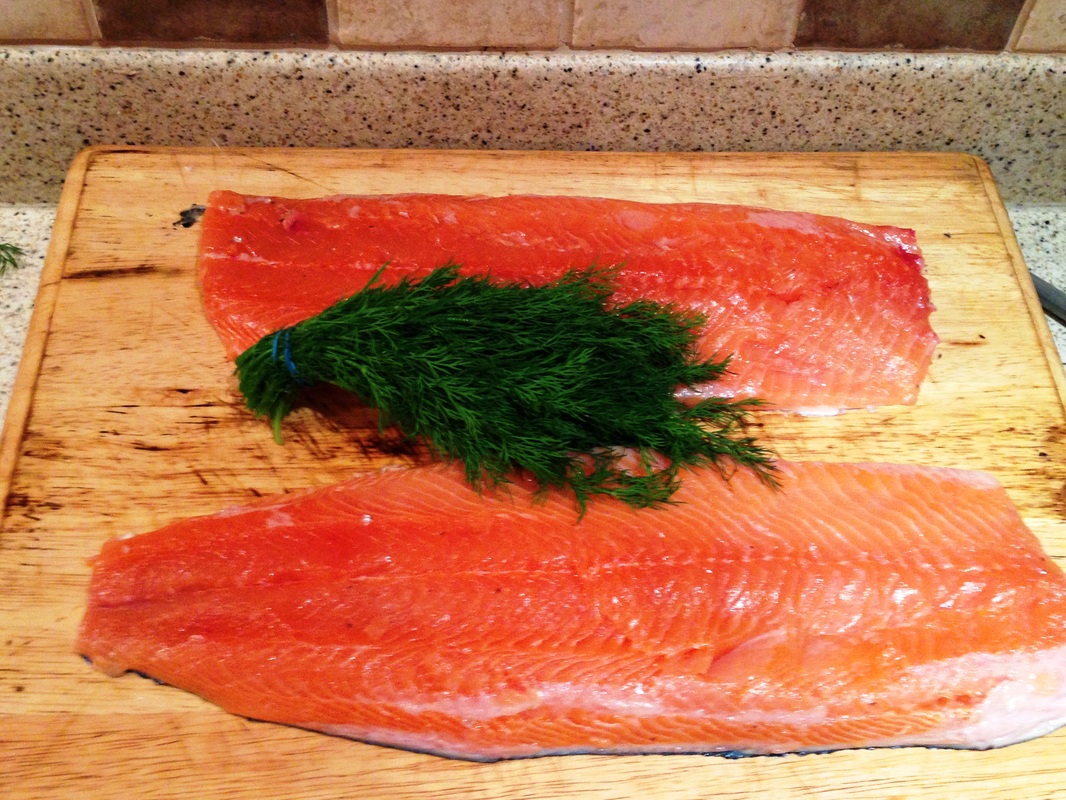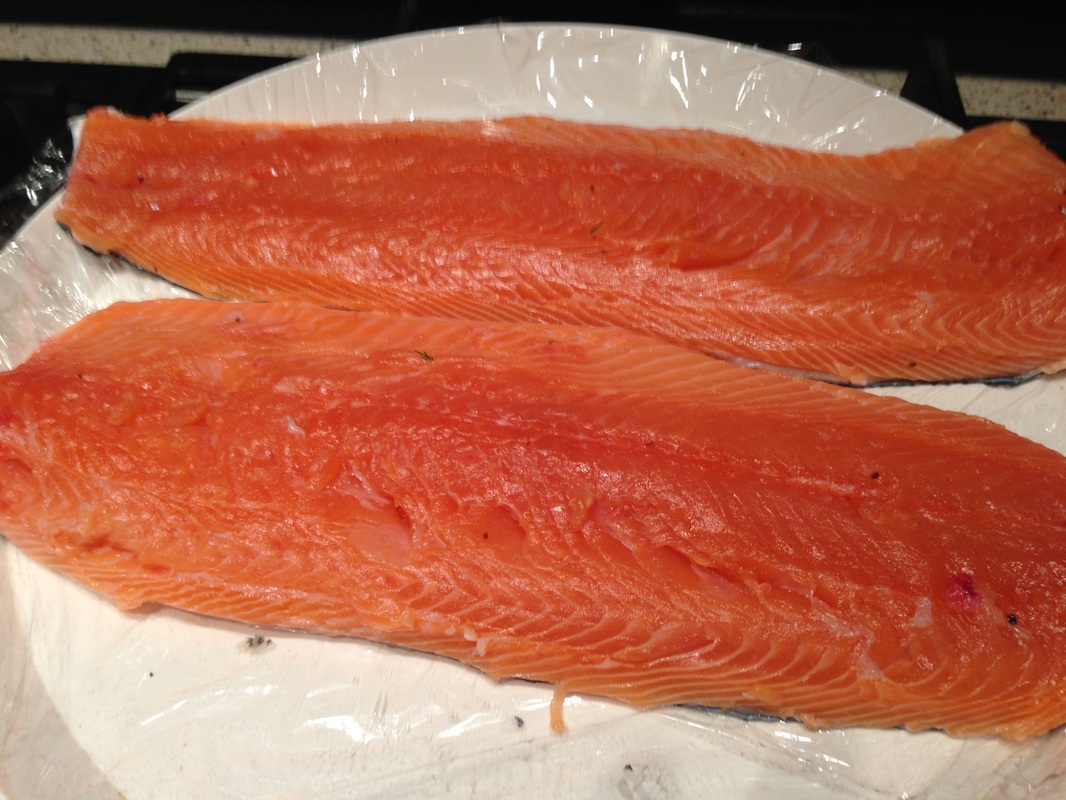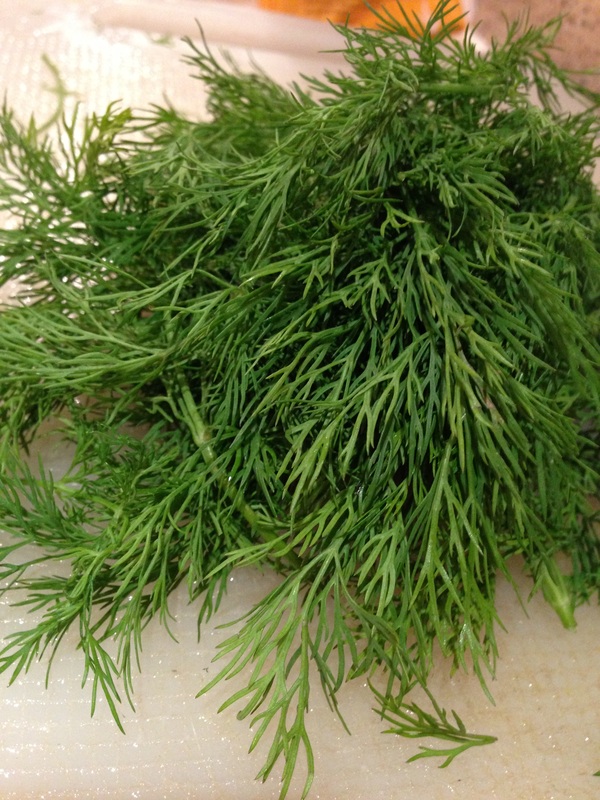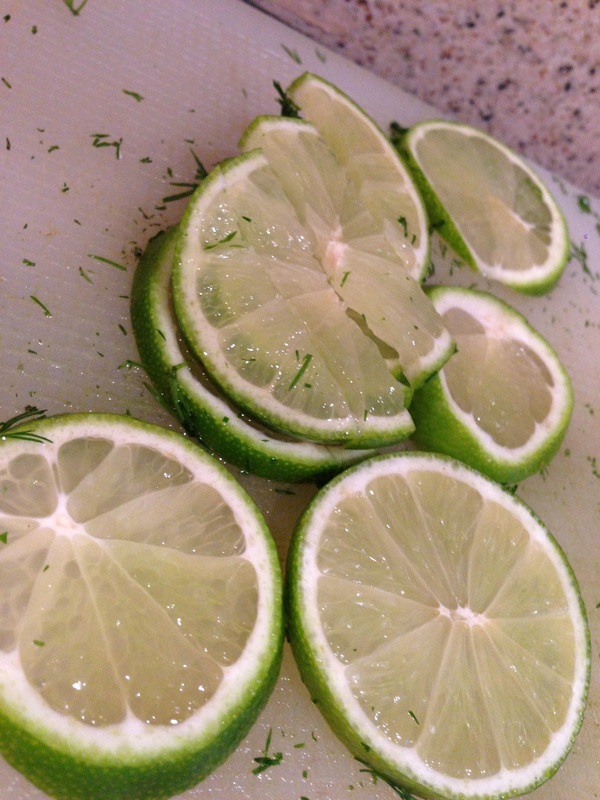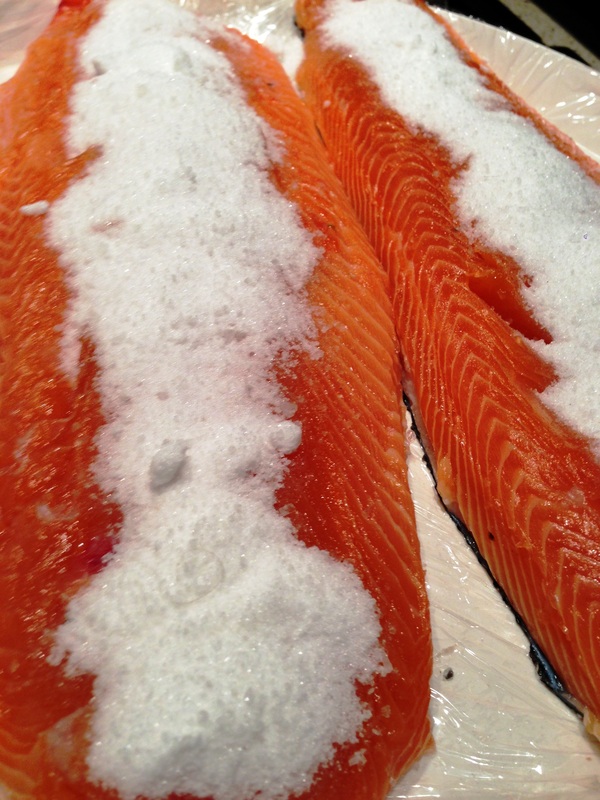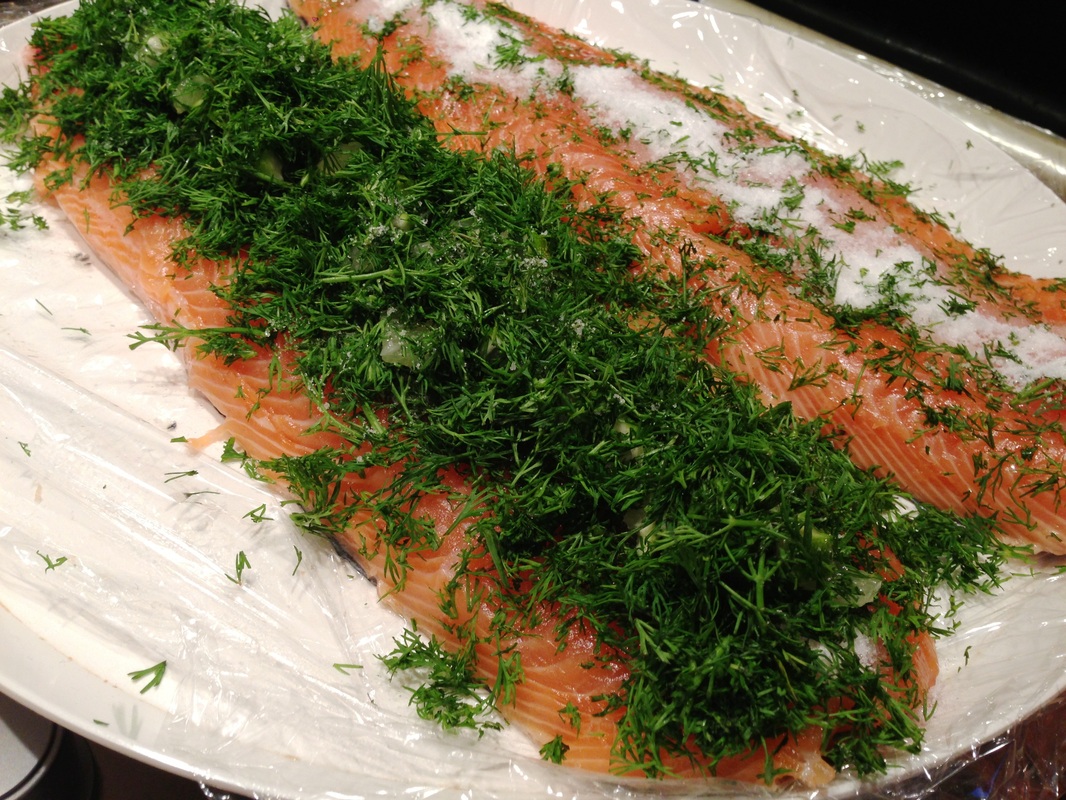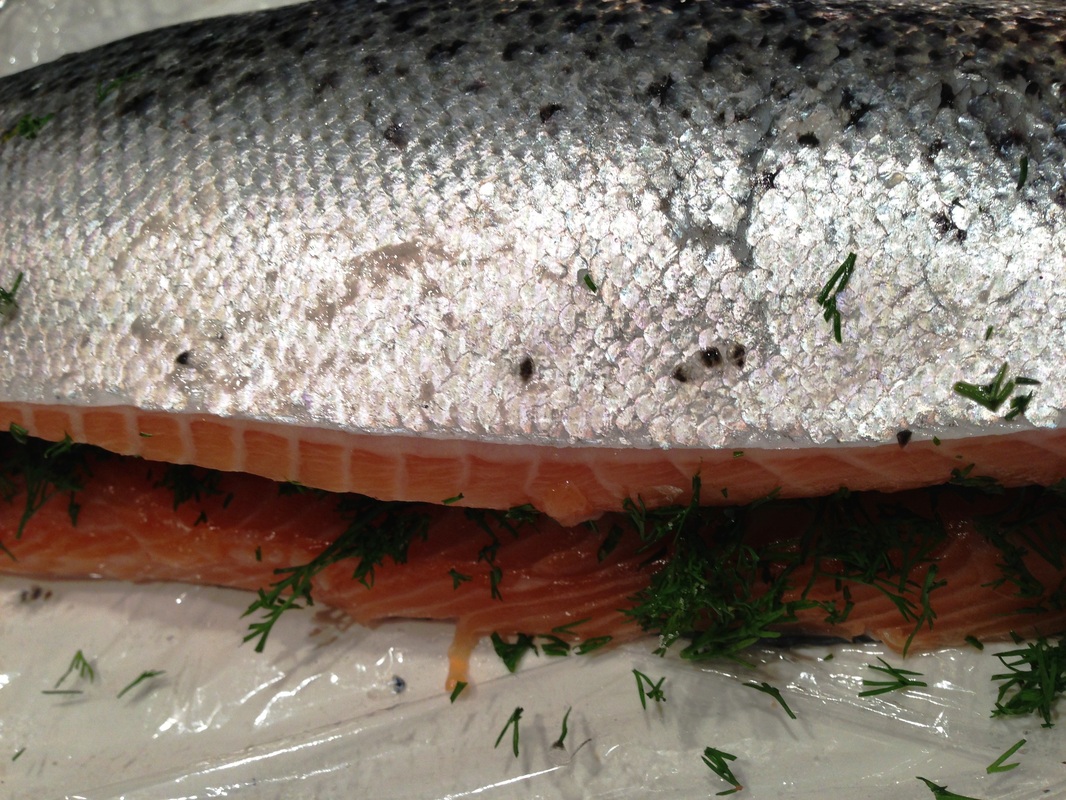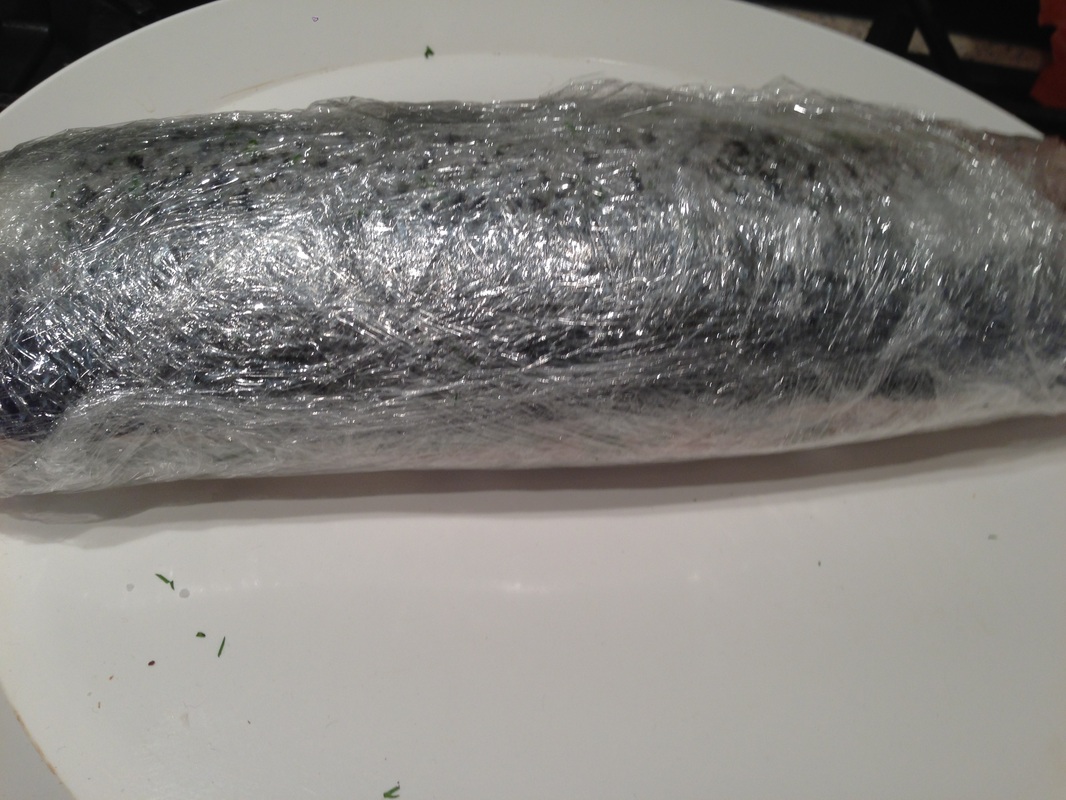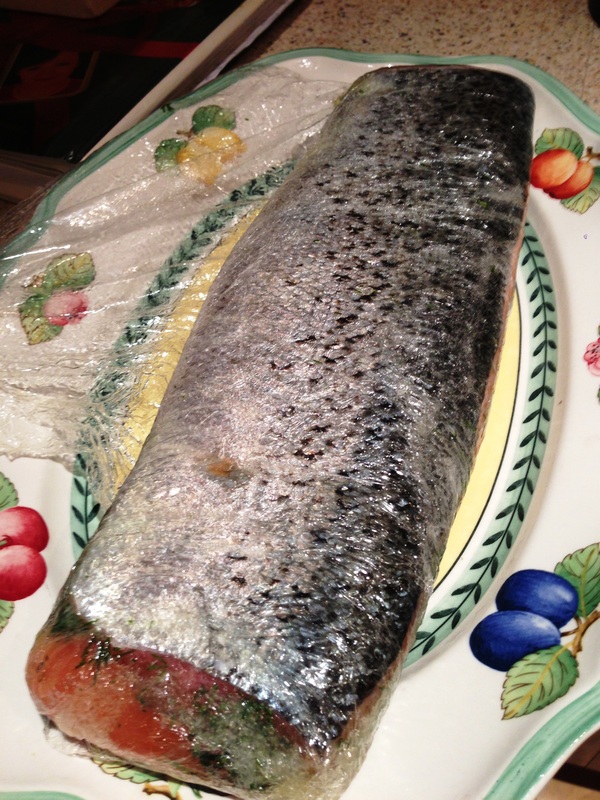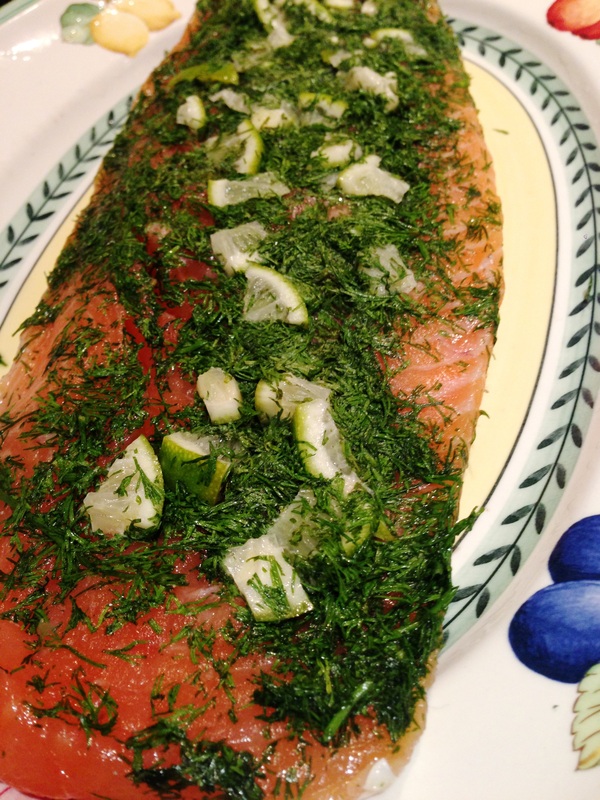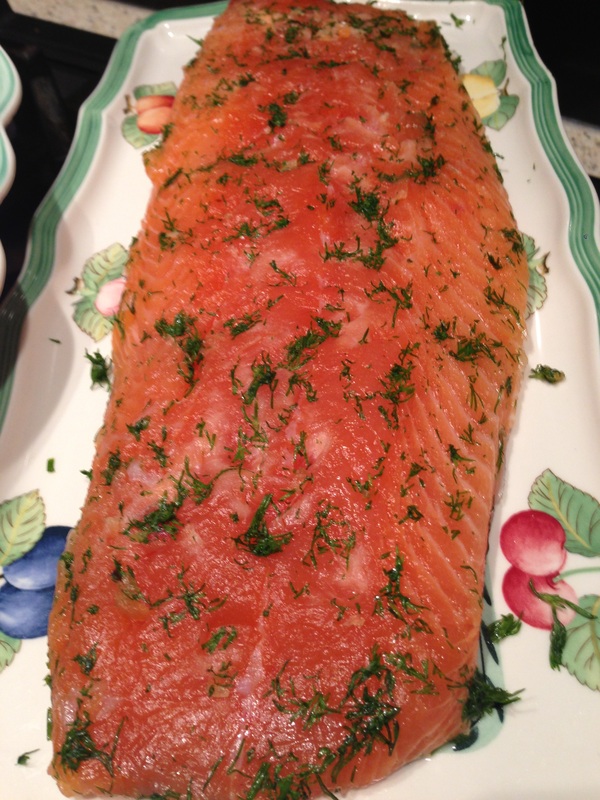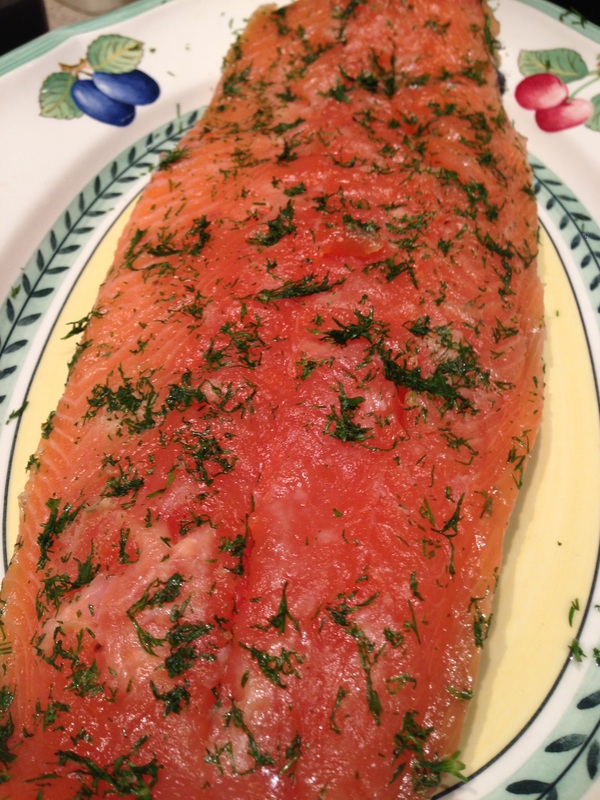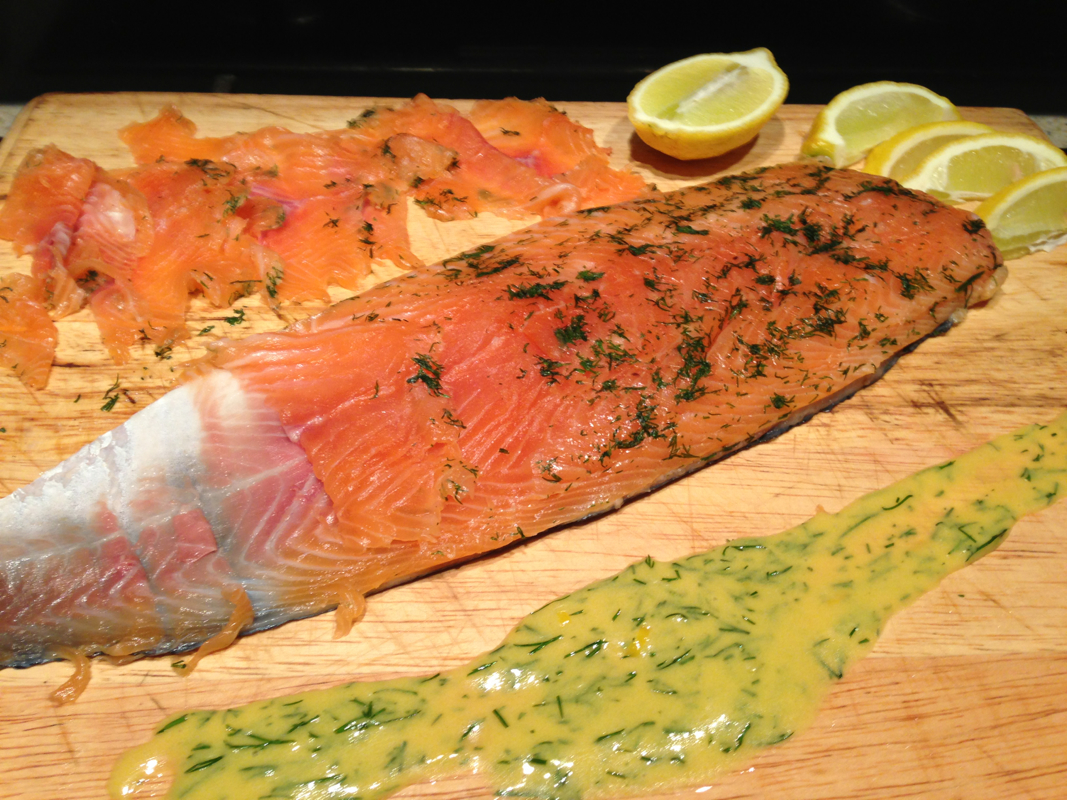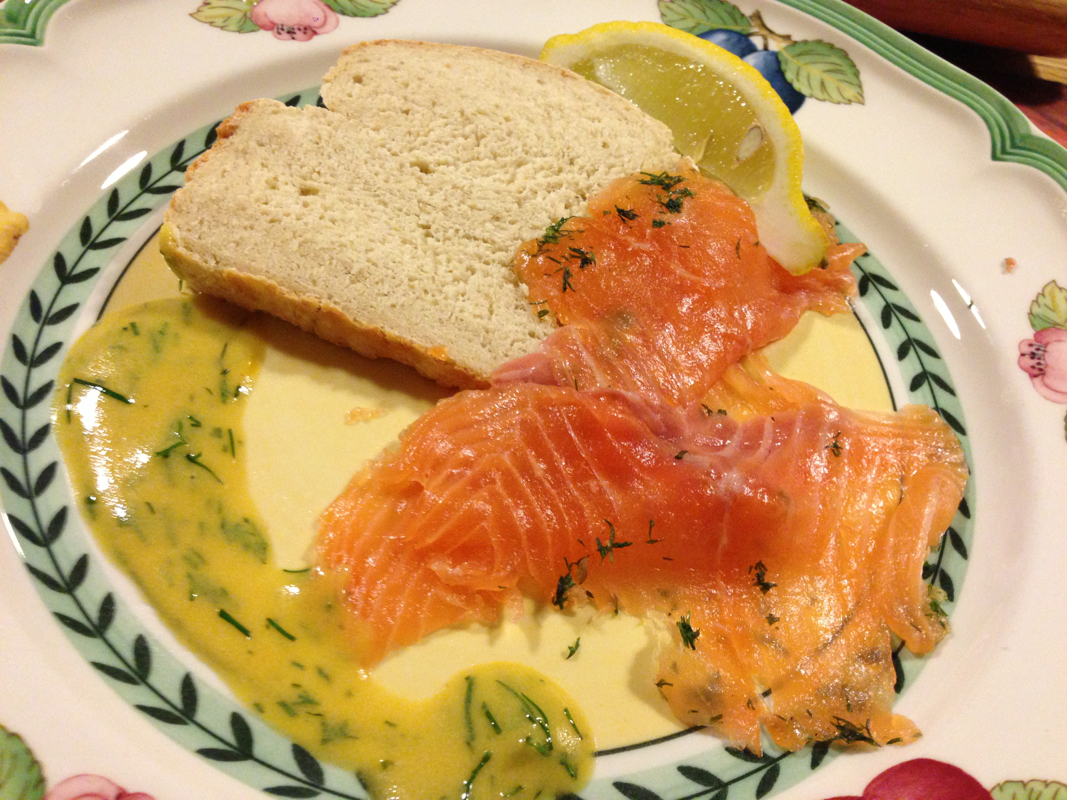Gravlax is a traditionally Nordic dish of salmon cured in salt, sugar and dill. It is quite close to smoked salmon but without the woody, smokiness that you get from the smoking process. Historically, salting was used to make meat and/or fish last for longer periods of time. It would be salted and buried underground to ferment and cure. The name gravlax literally means ‘buried salmon’ in Scandinavian.
Nowadays it isn’t buried and is just generally damn good. Soft, cool in the mouth, slippy, salty and fresh with dill. Serve with bread and perhaps a lemon, mustard mayonnaise or a traditional Nordic Mustard and Dill sauce – click here for the recipe. But to be honest, it is equally good just plain.
If you’re going to cook this, make sure you leave yourself enough time – it cures for 48 hours!
Based on the Gnolls recipe.
Nowadays it isn’t buried and is just generally damn good. Soft, cool in the mouth, slippy, salty and fresh with dill. Serve with bread and perhaps a lemon, mustard mayonnaise or a traditional Nordic Mustard and Dill sauce – click here for the recipe. But to be honest, it is equally good just plain.
If you’re going to cook this, make sure you leave yourself enough time – it cures for 48 hours!
Based on the Gnolls recipe.
Recipe (and see photos below for further illumination)
Ingredients (makes 2 whole salmon fillets’ worth….which will do you for a while!):
1 salmon (Ask your fishmonger to gut it for you and take its two fillets off. I’ll tell you how to fillet it though below, in case you buy it whole like I did or get it from a generous fishing friend. It doesn’t matter if it is scaled or descaled for gravlax). Use just one fillet too if you want to make less.
60g fresh dill, big stalks discarded and leaves chopped finely
7 tablespoons salt, sea salt best and finely ground
2.5 tablespoons of sugar
3/4 of a lime, diced
Method:
1. Fillet your salmon (skip ahead if you have done this): with a very sharp knife, carefully slice the salmon from anus (by the tail) to the head end about parallel with the gills. BE CAREFUL NOT TO PUT YOUR KNIFE IN TOO DEEP AND PUNCTURE THE GUTS. A sharp knife is key. Reach in and draw out the guts with a tug, discard. Take a teaspoon and scrape along the spine to remove the blood sac. Rinse out with a bit of water.
Chop the head off, just behind the gills. Place the fish with the spine side facing you and slice down the spine of the fish, cutting the top fillet off by sliding the knife in and along the top of the spine bones, following the natural line of them and making the cut in smooth, slices. Cut along like this to the tail and remove the top fillet. Turn the fish upside down and repeat with the other fillet. Done.
If making just one fillet’s worth, cut the fillet in half (so you have two fat short pieces, NOT two long skinny pieces).
2. Take a plate large enough to hold the fillets and lay clingfilm over it. Mix the salt and sugar together and lay the fillets side by side on the dish.
3. Scatter the salt, sugar mix down the middle of each fillet. Don’t scatter it out to the edges – keep it in the middle fat bit, it will spread out to the thinner edges while it cures and if you place it on the edges it will over cure them.
4. Take half of the dill and scatter it all over one of the fillets so that all of the flesh is covered. Then scatter the diced lime over it. Make sure the lime doesn’t touch the flesh of the fish or it will make it go white as the acid ‘burns’ it. Keep it on top of the dill. Then cover it with the rest of the dill, making sure to cover all the lime and scatter a few bits on the other, fillet without any dill or lime on it.
5. Place the ‘undilled’ fillet on top of the other one, flesh to flesh (skin on the outside) like a salmon fillet sandwich! Wrap the clingfilm up and around the fillets, forming a tight parcel and trying not to get any air in there. Take more clingfilm and wrap it even tighter. Put a second plate on top of the parcel and weigh it down with something.
6. Refrigerate this for 2 days. Expect leakage and drain this off about twice a day and turn it occasionally, twice a day to make sure the brine (formed by the salt and lime) cures the salmon evenly.
7. After 2 days remove the wrapping, separate the fillets and scrape off the dill and lime. Slice diagonally in thin slices. Serve!!!
Ingredients (makes 2 whole salmon fillets’ worth….which will do you for a while!):
1 salmon (Ask your fishmonger to gut it for you and take its two fillets off. I’ll tell you how to fillet it though below, in case you buy it whole like I did or get it from a generous fishing friend. It doesn’t matter if it is scaled or descaled for gravlax). Use just one fillet too if you want to make less.
60g fresh dill, big stalks discarded and leaves chopped finely
7 tablespoons salt, sea salt best and finely ground
2.5 tablespoons of sugar
3/4 of a lime, diced
Method:
1. Fillet your salmon (skip ahead if you have done this): with a very sharp knife, carefully slice the salmon from anus (by the tail) to the head end about parallel with the gills. BE CAREFUL NOT TO PUT YOUR KNIFE IN TOO DEEP AND PUNCTURE THE GUTS. A sharp knife is key. Reach in and draw out the guts with a tug, discard. Take a teaspoon and scrape along the spine to remove the blood sac. Rinse out with a bit of water.
Chop the head off, just behind the gills. Place the fish with the spine side facing you and slice down the spine of the fish, cutting the top fillet off by sliding the knife in and along the top of the spine bones, following the natural line of them and making the cut in smooth, slices. Cut along like this to the tail and remove the top fillet. Turn the fish upside down and repeat with the other fillet. Done.
If making just one fillet’s worth, cut the fillet in half (so you have two fat short pieces, NOT two long skinny pieces).
2. Take a plate large enough to hold the fillets and lay clingfilm over it. Mix the salt and sugar together and lay the fillets side by side on the dish.
3. Scatter the salt, sugar mix down the middle of each fillet. Don’t scatter it out to the edges – keep it in the middle fat bit, it will spread out to the thinner edges while it cures and if you place it on the edges it will over cure them.
4. Take half of the dill and scatter it all over one of the fillets so that all of the flesh is covered. Then scatter the diced lime over it. Make sure the lime doesn’t touch the flesh of the fish or it will make it go white as the acid ‘burns’ it. Keep it on top of the dill. Then cover it with the rest of the dill, making sure to cover all the lime and scatter a few bits on the other, fillet without any dill or lime on it.
5. Place the ‘undilled’ fillet on top of the other one, flesh to flesh (skin on the outside) like a salmon fillet sandwich! Wrap the clingfilm up and around the fillets, forming a tight parcel and trying not to get any air in there. Take more clingfilm and wrap it even tighter. Put a second plate on top of the parcel and weigh it down with something.
6. Refrigerate this for 2 days. Expect leakage and drain this off about twice a day and turn it occasionally, twice a day to make sure the brine (formed by the salt and lime) cures the salmon evenly.
7. After 2 days remove the wrapping, separate the fillets and scrape off the dill and lime. Slice diagonally in thin slices. Serve!!!

